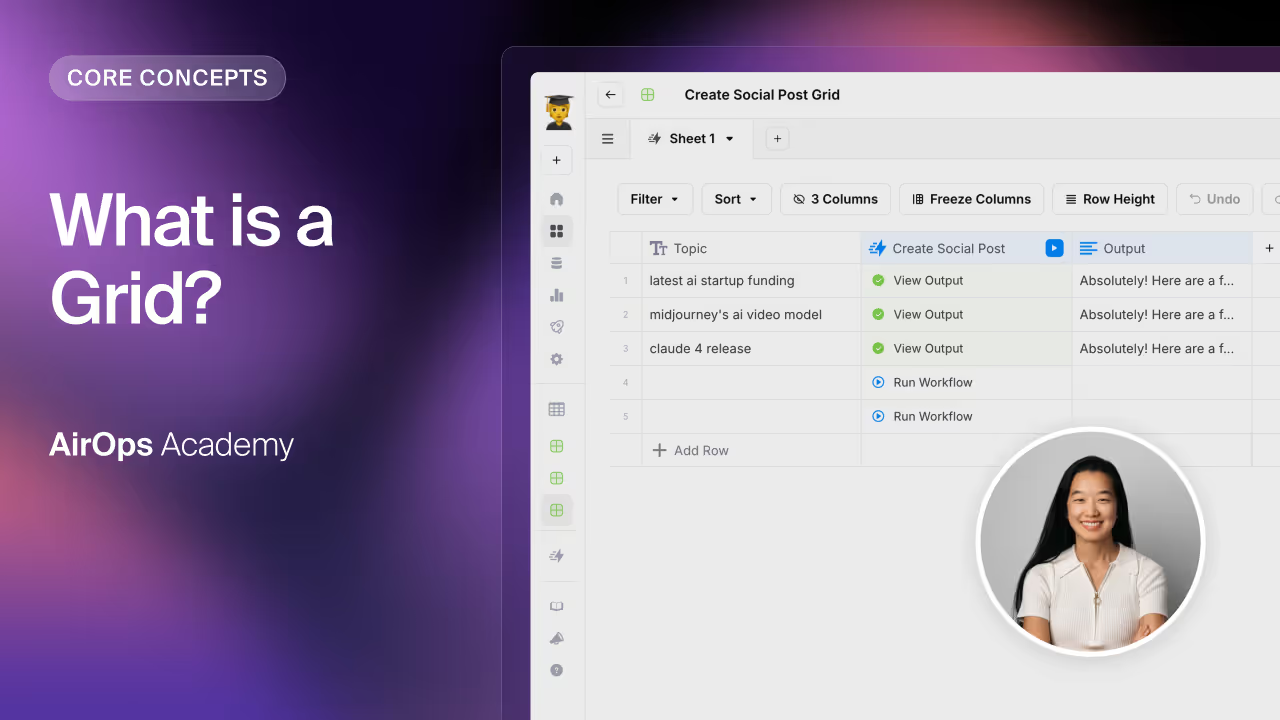What is a Grid?
Now that you know what a Workflow is, you're probably wondering, well great, what do I do with this? This is where Grids become extremely important.
So what is a Grid? A Grid is a spreadsheet-like interface that we use to orchestrate content Workflows at scale.
Example: Social Post Workflow
Publishing the Workflow
- Once you finalize the social post Workflow, click Publish. This creates a saved version you can always go back to and opens a pop-up
- In the pop-up, click Create Grid to generate the social post Grid
Running Topics at Scale
- Now that the social post Grid is created, run topics at scale by importing a CSV of topics or keywords
- Press Play to run all rows concurrently
- When rows display View Output, open the result and add it as a single column
Grid Structure
Each Grid mirrors the Workflow structure:
- Inputs: the topics or keywords
- Workflow steps: the sequence of operations
- Output: appears as columns in the Grid after execution
Chaining Multiple Workflows
Beyond a single Workflow, it’s possible to run multiple Workflows in a row. We call this chaining.
- In a classic keyword-to-article Grid, start with a keyword, create a content brief, then draft the article
- Dependent Workflows run left to right, with one step’s output feeding the next
- Independent Workflows run concurrently in each row; each row operates separately from top to bottom
For example, the keyword “What is an ACH payment” will have nothing to do with “What is procure to pay.”
Common Use Cases for Grids
The most common reasons to use Grids are:
- Orchestrating content at scale: keywords to articles, outbound emails, social media posts
- Creating a dataset: build a database of products by scraping and extracting data
- Transforming data: clean a CSV or import from a CMS, which could be used to transform data as well

